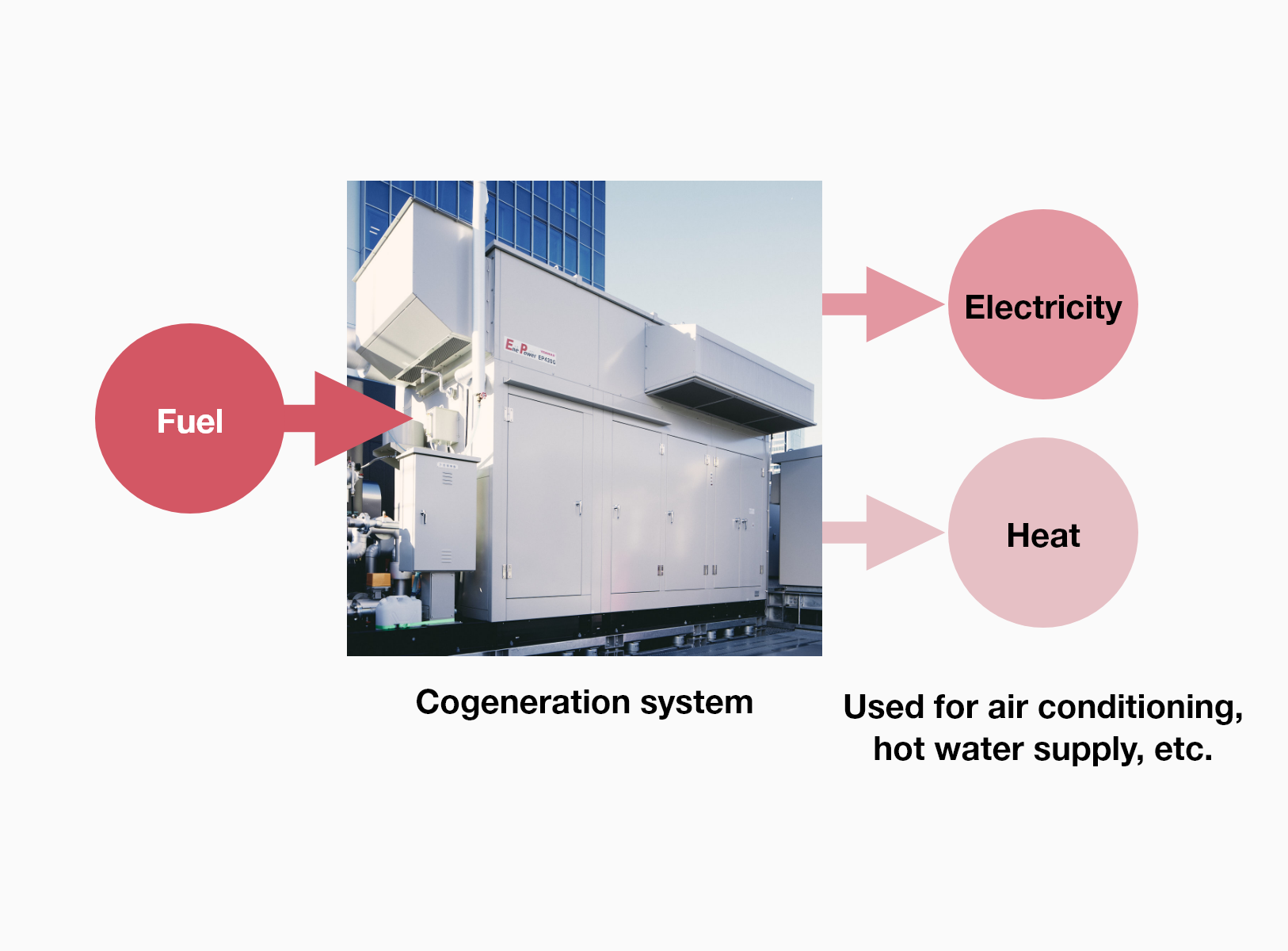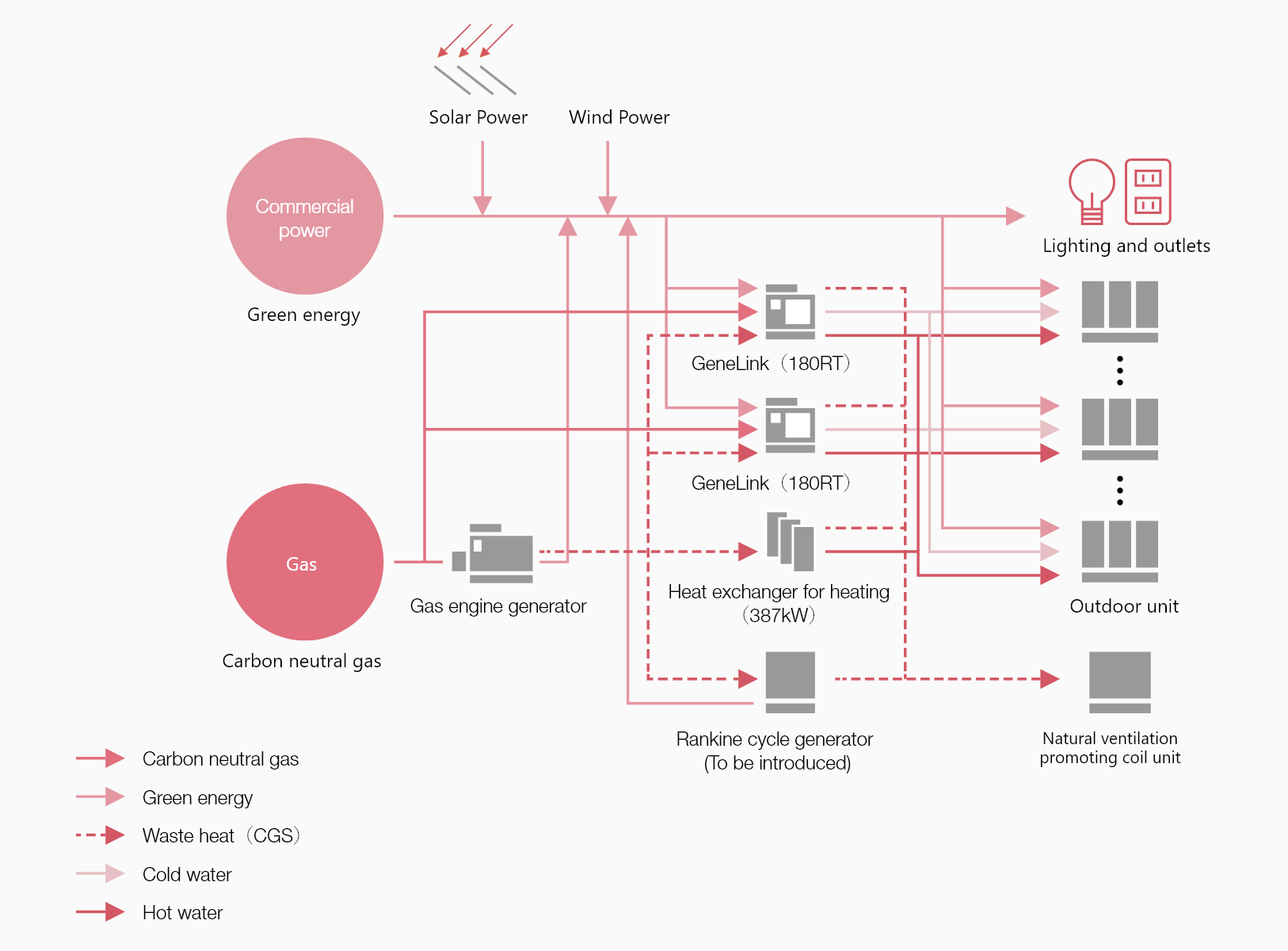YANMAR TOKYO has achieved carbon neutrality


We will leave this world better than we found it
Yanmar is promoting the activities of YANMAR GREEN CHALLENGE 2050 with the aim of realizing A SUSTAINABLE FUTURE.
At YANMAR TOKYO we have achieved carbon neutrality with a total energy solution in a concept building.
We aim to create a society where the next generation can live in abundance.
We aim to create a society where the next generation can live in abundance.

Roadmap for achieving ZERO CO2
YANMAR TOKYO aims to reduce CO2 emissions to zero by implementing carbon offset initiatives such as CO2 reduction through energy saving and procurement of green power and carbon-neutral LNG.
STEP1Constructive efforts
・Low-E double glazing
・Rooftop gardening
・Eco louvers
STEP2Use of equipment
・CO2 controls
・Outside air cooling
・Water supply by large temperature difference
・High efficiency LED
・Dimming controls
STEP3Energy-conserving operation
・Cogeneration Systems + GeneLink
・High efficiency GHP
・Pneumatic radiant air conditioning
・Natural ventilation
・Solar power, Wind power
・Task ambient lighting
・EMS(Energy Management System)
STEP4Technological innovation
・Higher efficiency cogeneration and GHP
・Higher efficiency lighting, fans and pumps
・Thin client transition
・Decrease in staff density due to lifestyle changes
[Calculation conditions]
· Target area: Office areas
· CO2 emission coefficient: commercial power 0.555kg-CO2/kWh, city gas 2.277kg-CO2/kWh (Yanmar head office building standard)
*As of February 2021 -> 0.441kg-CO2/kWh, city gas 2.19kg-CO2/kWh
Becoming carbon neutral through total energy solutions

- System flow
- A cogeneration system (CGS) is a system that burns heavy oil or gas as fuel to generate electricity, and also effectively utilizes the heat generated at that time for purposes such as air conditioning and hot water supply.
During the interim period, a high waste heat utilization rate was achieved throughout the year through the use of waste heat in the natural ventilation promotion coil unit and the Rankine cycle generator (plans to install in the future).
Carbon offset initiatives
What is carbon offset?
Carbon offset compensates for all or part of the amount of greenhouse gases such as carbon dioxid to be reduced as much as possible, then the gases that cannot be reduced even if we make efforts to do so, through afforestation, forest protection, clean energy business operations (purchase of emission rights), etc.
YANMAR TOKYO is working on carbon offset through purchasing green electricity etc.

CO2 is generated through daily activities.

Constructive efforts and CO2 reduction through cogeneration, high-efficiency GHP, etc.

Offsetting CO2 that cannot be reduced.
Main activities
- Green energy
- We procure clean electricity from 100% renewable energy, including environmental value. (Carbon offset targets)
- Carbon neutral gas
- Carbon offset is achieved by offsetting the greenhouse gases generated in the process from extracting to burning natural gas with the credits generated from activities such as forest conservation and afforestation.
